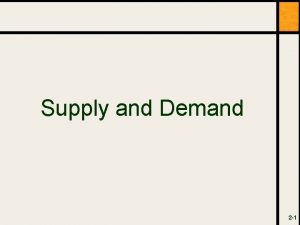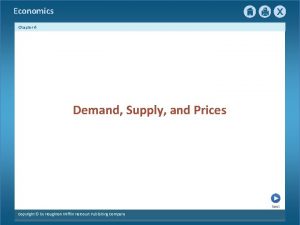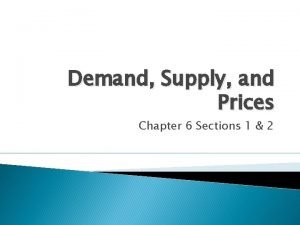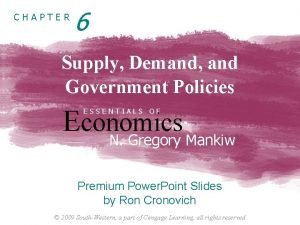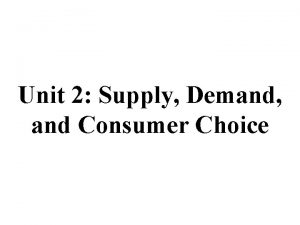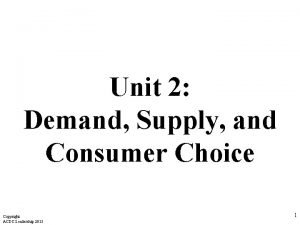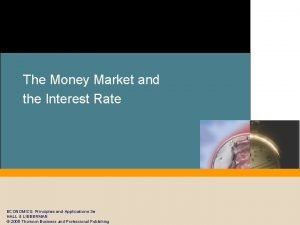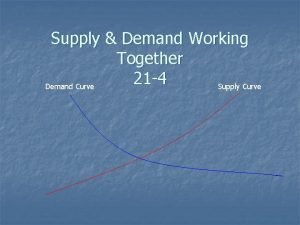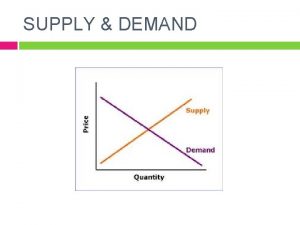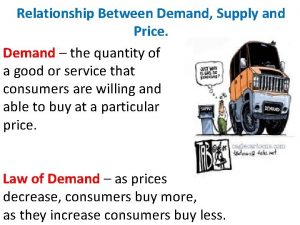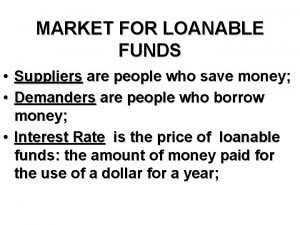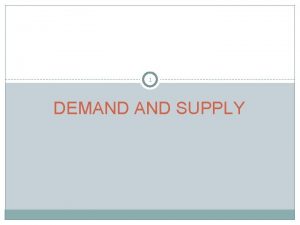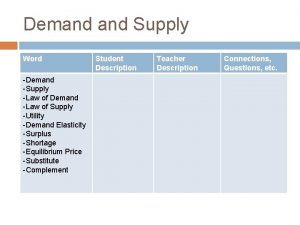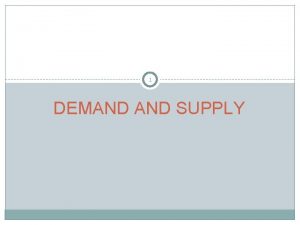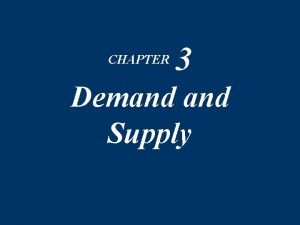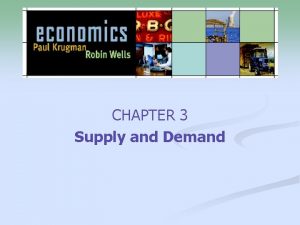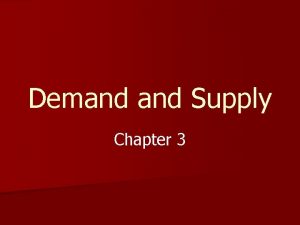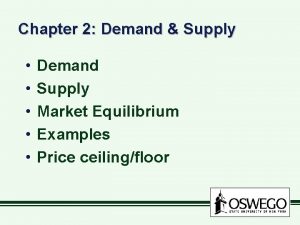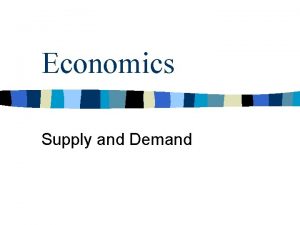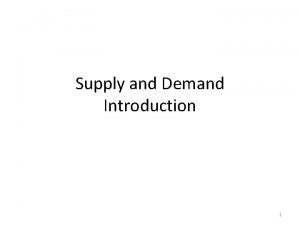Supply and Demand 2 1 Drawing on Chapter






















- Slides: 22

Supply and Demand 2 -1

Drawing on Chapter 2 Mc. Graw-Hill/Irwin Graphics copyright © 2010 The Mc. Graw-Hill Companies, Inc. All rights reserved.

Steps in Analysis 1. Define market Product, participants, geography, time period, etc. 2. Characterize S & D functions P Q or Q P, and Laws of S & D 3. Observe status of market (dis)equilibrium and/or government interventions 4. Track and predict changes In determinants of S &/or D, and their effects on S &/or D, disequilibrium, and P & Q

1. Defining a market • Product – • Participants – • Actual and potential Geography & communication – • • One, or related types? From agora to Ebay Time period Institutions – Rules Organizations

2. Supply Function • Supply of a product – QS = S(PS, E, Pi, NS, Pf, W, T) • • • QS = quantity supplied PS = price to suppliers E = efficiency of technology (costs, productivity) Pi = prices of inputs (factors, intermediate products) NS = number of suppliers Pf = expected future price W = measure of other “shocks, ” such as weather T = excise tax on suppliers (? ) Focus on QS-PS relationship P Q or Q P, and Law of Supply

Figure 2. 2: A Supply Schedule for Lobsters in Hyannis, MA. , July 20, 2006 2 -6

2. Demand Function • Demand for product – QD = D(PD, M, ND, A, PZ, Pf, T) • • • QD = quantity demanded PD = price to demanders (buyers) M = incomes (per potential buyer) ND = population A = measure of tastes (preferences) PZ = prices of substitutes or complements Pf = expected future price T = excise tax on demanders (buyers) (? ) Focus on QD-PD relationship P Q or Q P, and Law of Demand

Figure 2. 1: The Demand Curve for Lobsters in Hyannis, MA. , July 20, 2006 P 0 P 1 Q 0 Q 1 2 -8

Equilibrium Quantity and Price • Equilibrium quantity and price: it is the pricequantity pair at which both buyers and sellers are satisfied. • Excess supply: the amount by which quantity supplied exceeds quantity demanded. • Excess demand: the amount by which quantity demanded exceeds quantity supplied. 2 -9

3. Status of Market: Equilibrium • • Attractor or destination, usually not current status Stable in short run

Figure 2. 3: Equilibrium in the Lobster Market 2 -11

3. Status of Market: Disequilibrium • Unstable – Excess supply or demand – Usually temporary unless … • Government controls – Price ceiling – Price support (such as a floor) – Production quota • Potential for welfare improvement

Figure 2. 4: Excess Supply and Excess Demand 2 -13

Figure 2. 5: An Opportunity for Improvement in the Lobster Market 2 -15

Figure 2. 6: Rent Controls 2 -17

Figure 2. 7: A Price Support in the Soybean Market 2 -18

4. Track and Predict Changes • For each event, – – • Which does it affect: S &/or D? Which way? What type of disequilibrium? What changes in P & Q? Write and graph

Figure 2. 9: Factors that Shift Supply Schedules 2 -20

Figure 2. 8: Factors that Shift Demand Curves 2 -21

Figure 2. 12: Graphs of Equations 2. 1 and 2. 2 2 -22

Figure 2. 11: The Effect of Soybean Price Supports on the Equilibrium Price and Quantity of Beef 2 -23

The market for cheap whiskey in Wisconsin • Supply: PS = 3. 50 + 0. 50 QS (Units: 1, 000 s of bottles/week, $/bottle) • • Demand: PD = 11. 00 – QD Equilibrium: Q 1 = Qs = QD, P 1 = PS = PD • Solve for (Q 1, P 1) and graph
 Module 5 supply and demand introduction and demand
Module 5 supply and demand introduction and demand Matching supply with demand
Matching supply with demand Supply and demand drawing
Supply and demand drawing 5 determinants of supply
5 determinants of supply Chapter 6 section 2 supply and demand in everyday life
Chapter 6 section 2 supply and demand in everyday life Chapter 33 aggregate demand and aggregate supply
Chapter 33 aggregate demand and aggregate supply Chapter 6 demand supply and prices
Chapter 6 demand supply and prices Chapter 6 supply demand and government policies
Chapter 6 supply demand and government policies Chapter 5 section 1 supply
Chapter 5 section 1 supply Measures to correct excess demand and deficient demand
Measures to correct excess demand and deficient demand Independent demand examples
Independent demand examples Iskedyul ng suplay halimbawa
Iskedyul ng suplay halimbawa Demand forecasting and estimation
Demand forecasting and estimation Paradox of value
Paradox of value Reorder point
Reorder point Unit 2 demand supply and consumer choice
Unit 2 demand supply and consumer choice Unit 2 demand supply and consumer choice worksheet
Unit 2 demand supply and consumer choice worksheet Money market equilibrium
Money market equilibrium Combining supply and demand worksheet
Combining supply and demand worksheet Interaction of demand and supply
Interaction of demand and supply What is the relationship between supply and price
What is the relationship between supply and price Who are the demanders of loanable funds
Who are the demanders of loanable funds Shifters for loanable funds
Shifters for loanable funds


